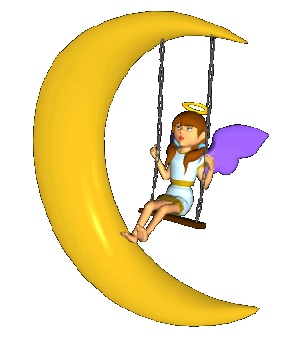Moon Illusion?
|
||||||||||
| Printer Friendly Story View |

Why does the moon look larger (and a different color) when it's on the horizon?
We all know that when the moon is on the horizon (whether rising or setting), it looks different than when it's overhead in the sky. Right? Typically it looks more reddish orange on the horizon as well as a lot larger in size. Most people would estimate a 50% or more size difference.
Why is this?
There are two separate answers to this question as there are two (or more) different phenomena in play here.
First, let's define the size of the earth and its atmosphere. The earth is a sphere roughly 8,000 miles in diameter. The earth's atmosphere extends (depends on whom you ask) up about 50-100 miles from the surface of the earth. Because the atmosphere thins with increasing height, some sources say 300 miles is the complete thickness. Regardless, the thickness of the atmosphere is negligible compared to the diameter of the earth - about 1% if you consider the point at which 99% of the atmosphere exists- so one might say the atmosphere is only a thin "shell" or "membrane" around the earth.
When light travels from the moon into the eyes of an observer on earth, it travels through space (just under a quarter of a million miles), then the earth's atmosphere. When the moon is "straight up in the sky", the light travels through 1 atmosphere of thickness "straight" down to the observer.
Now think about looking at the moon on the horizon. In this case, light from the moon enters the atmosphere and travels the thickness of it, plus an extra distance equal to the radius of the earth. For example, say 100 miles through the atmosphere then 4,000 more miles through more of the atmosphere from the horizon to the observer.
As you can see, the light travels through a lot more of the earth's atmosphere when the moon is at the horizon!
What do we know about the makeup of the atmosphere? We know that there are small particles (molecules of gases) and large particles (dust, etc.). These particles scatter light. Short wavelength light (toward the blue end of the spectrum) is scattered more than long wavelength light (red). The remaining (non-scattered) light is what we see. When the moon is on the horizon, the light travels through much more of the atmosphere and much more blue light is scattered, leaving a higher amount of red light that we see as we look at the moon on the horizon. So that's why it looks red.
Many explain the phenomenon above in the sense that the moon is actually one earth radius more distant from the observer when at the horizon than it is overhead. Wait a minute - common sense tells us that when the moon is overhead for any given observer it is actually on the horizon for an observer one-quarter hemisphere (6 time zones) to the west. If this convoluted notion were to be true (it is not) then the moon would actually get closer to the earth as the earth rotated and it would have crashed into the earth a long time ago!
The proper explanation, as explained above, is that the distance is the same but the moon passes through more of the earth's atmosphere on the horizon because the observer is viewing at a tangential rather than perpendicular location with respect to the atmosphere.
But this is not the reason the moon looks larger on the horizon - not even close.
Many individuals, scientists, astronomers, university physicists, and others have an opinion on the moon size illusion. You can "Goggle" the term "Moon Illusion" and notice the high number of matching pages/websites. Some of them will even say that my explanation is not the most plausible.
Researchers, scientists, and doctors that study visual perception have long known that most of our vision takes place in our brain. Our eyes act as cameras and just focus an image (a sloppy, upside-down one at that - and many of us need help at this first stage), then the neural mechanisms of the brain sharpen up the image as we interpret, process, and perceive it as upright.
Our brain can adapt to a variety of visual influences and stresses. One example is a study performed in which subjects were given glasses that inverted everything they saw. Eventually, the subjects adapted to this such that they did not have "upside-down" vision. However, when these glasses were removed, everyone did see "upside-down" once again until the brain again adapted to normalcy.
We have to understand that the moon size illusion IS just an illusion. Cameras have been used to document the actual size of the moon on the horizon and up in the sky - the photos are exactly the same size at both positions and everywhere in between.
Well, almost. Actually, the moon's size (or, more properly, visual angle) is about 1-2% SMALLER on the horizon! This is because, as in the color change explanation, passing through more of the atmosphere scatters and bends the light more and causes an apparent reduction in angular size through this mechanism. But it is interesting that this phenomenon works against the actual moon size illusion.
The real reason the moon appears larger on the horizon is our brain.
Our brain is out-smarting itself.
Our brain knows that the actual retinal image size of the moon is the same whether it's overhead or at the horizon. (The retinal image size is the size of the image on the retina, in the back of our eye, that contributes to an object's perceived size). Our brain knows this because in whatever context in which an observer is looking at the moon, it has a previously determined size concept from the other perspective - i.e. we have seen the moon in each position many times.
Our brain knows that the image size is the same either way, but our brain feels that the moon on the horizon is farther away - only because there are typically trees, houses, buildings, utility lines, etc. interspersed between the observer and the moon - in contrast to when the moon is overhead, where there is only space between the observer and the moon.
So to end up with the same retinal image size in both scenarios, but to have achieved this when the object of regard in one sense is more distant (so it thinks), our brain reasons that the more distant object (moon on the horizon) must have been larger to start with. So it makes our cortical perception of this image larger, despite what the camera says.
There are scientists who would tend to disagree with this explanation and instead offer several other explanations, none of them proven. Humorously, Donald Simanek, professor of physics at Lock Haven University in Pennsylvania, offers thinking to the contrary and also that "The moon illusion" disappears (for most people) when they bend down and look at the moon between their legs.
[Is it merely coincidence that this is the position used for "mooning"? Disregard that.]?
Professor Simanek presents this and other scholarly ideas at http://www.lhup.edu/~dsimanek/3d/moonillu.htm - In the absence of other compelling evidence, theories, ideas, or proof either way, the brain explanation will remain the most credible in my own brain.
Please submit your questions or feedback on this or any other eye or vision topic!
NEWTON I invite your questions and feedback.
Or Contact Dr. Lee Newton at:
3720 E. Wilder Road, Bay City, MI
(989) 667-9393
Coming next week - we will discuss a new, non-surgical form of vision correction that provides clear vision all day long without the need for daytime glasses or contact lenses!3720 E. Wilder Road, Bay City, MI
(989) 667-9393
| Printer Friendly Story View |
|
|

Dr. Lee Newton, Eye Care |
|
|
|
Printer-Friendly Story View
0200 Nd: 04-19-2024 d 4 cpr 0
12/31/2020 P3v3-0200-Ad.cfm
SPONSORED LINKS
12/31/2020 drop ads P3v3-0200-Ad.cfm


